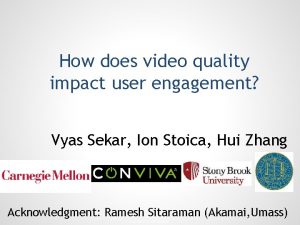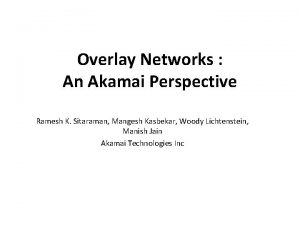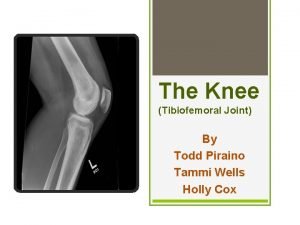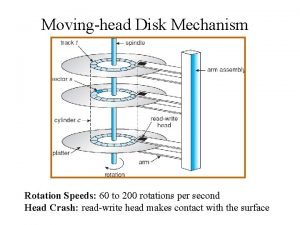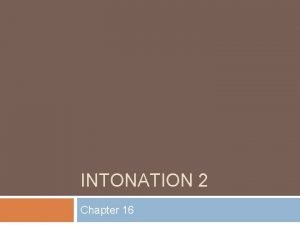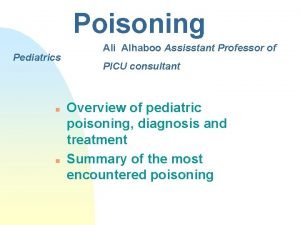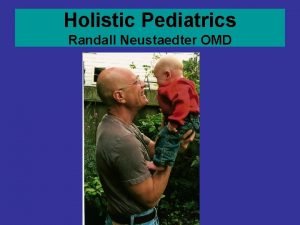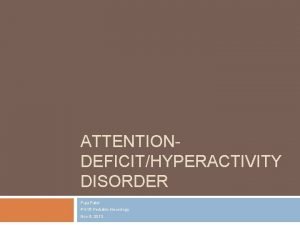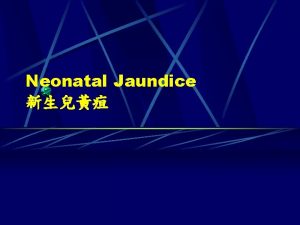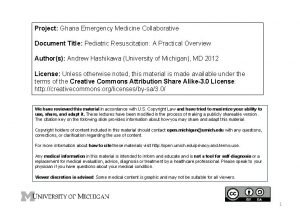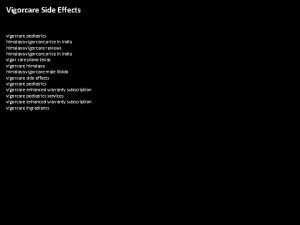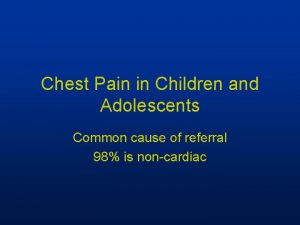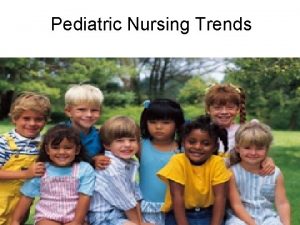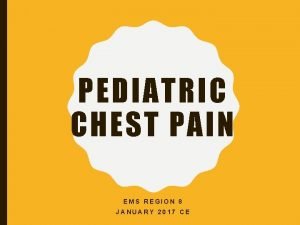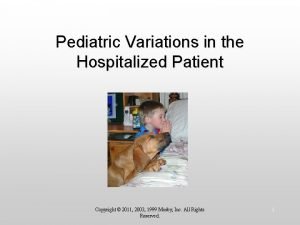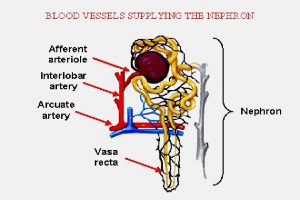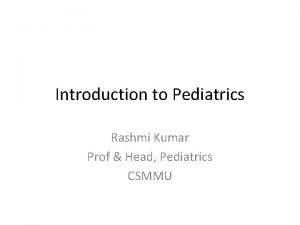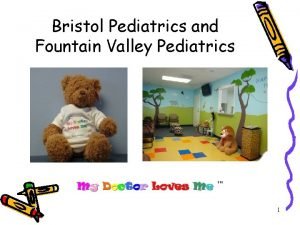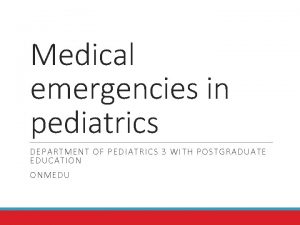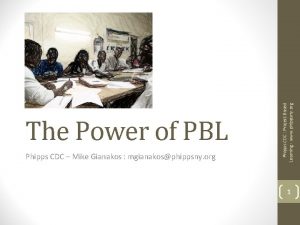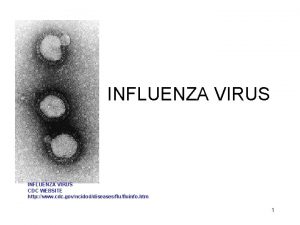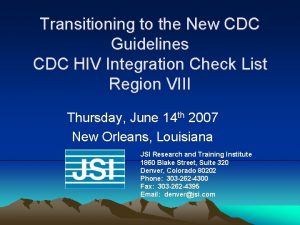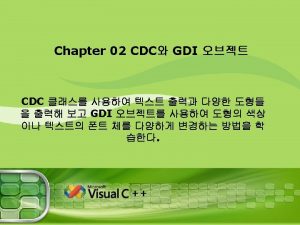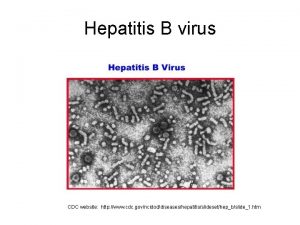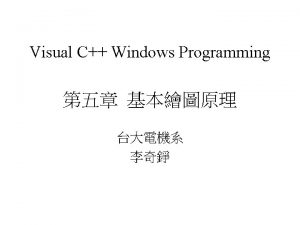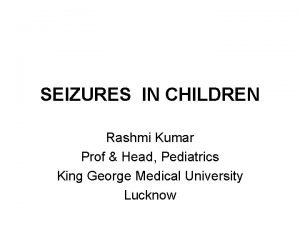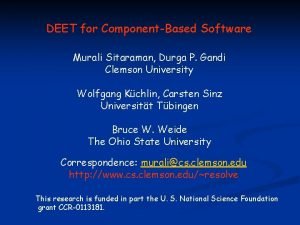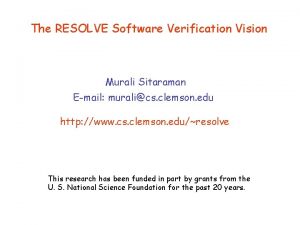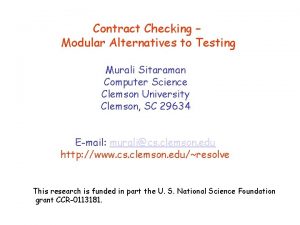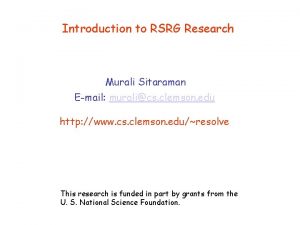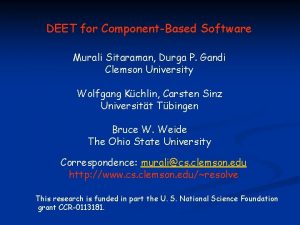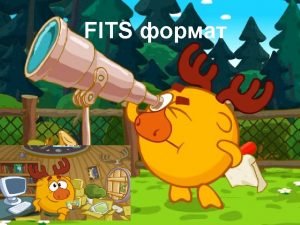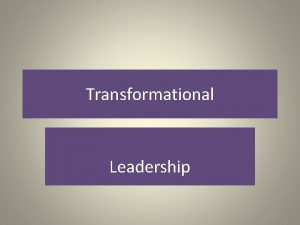Dr s sitaraman Prof Head Pediatrics Incharge CDC





























- Slides: 29

Dr. s. sitaraman Prof. &Head Pediatrics Incharge CDC (Neurodevelopment Division) Sir P. M. C. H. Institute S. Medical college

Autism • Pervasive development disorder (PDD), ‘ Kanners syndrome’ • Neurodevelopment disorder • Not mental retardation • Children affected have difficulty in communicating and socially interacting with others

• Raghav is a 3 year old who keeps playing with the same toy over and over again • Does not look at the person when talked to • Keeps flapping his hands

Indian data ? Aakriti Uttam/One. World South Asia • Apr 05, 2012 • “lack of basic equipment and improper diagnosis of autism, the disorder is growing in India which now has over 10 million cases. Experts say early detection of this incurable disease can help a child lead his full potential but many medical professionals are unable to detect the disorder. ”

The challenges! • complex nature, • lack of diagnostic biomarkers, • changing diagnostic criteria.




Clinical picture • Initial signs and symptoms apparent in the early developmental period • social deficits and behavioural patterns might not be recognized as symptoms of ASD until a child is unable to meet social, educational, occupational, or other important life stage demands. • Functional limitations vary among • persons with ASD


presentation • Social interaction • Language as used in communication • Symbolic/imaginative play • Before age of 3

DSM-IV criteria • First, important to note that autism is a spectrum disorder characterized by: – Impairments in social interaction – Impairments in communication – Presence of restricted, repetitive behaviors (RRBs) • Spectrum = variability within and across these areas

Socialisation • • Prefers to be alone Does not respond to name Unusual eye contact Does not seek comfort Does not point to ask for an object Does not have pretend play Dos not like change in routine

Emotions • Insensitivity to pain • Extreme distress for no apparent reason • Appears unaware of distress in others • Poor awareness of danger

Communication • • Displays rote memory to rhymes bhajans Delay in language development Loss of early acquired language Rarely uses gestures Leads adult by hand to have needs met Echolalia Difficulty in sustaining conversation

Repetitive Action • Displays unusual behavior/movements -spinning, hand flapping • Repetitive actions/Questions • Enjoy rotating/spinning objects • Obsessed with parts of objectsknobs, wheels

Sensory integration difficulties • Oral aversion to certain textures or colors • Olfactory aversion • Tactile aversion to certain fabrics • (tags on clothing) • Auditory aversion to loud noises


• INSTRUCTIONS FOR EVALUATION • �Primary caregiver must be present with the child • �These behaviors are to be assessed in the context of children of same age • �Explain to parents that the answers should be based on the child’s behavior most of the time • �Follow the age directions given along with the question. For questions where no age cut-off is • given, they should be asked for all children i. e. all ages (2 -9 years) • �Ask the questions verbatim • Question can be repeated if the respondent can not understand






For certification Use Indian scale for autism assessment (ISAA)—annexure B • 40 tests 6 domains Domains § § § social relationship &reciprocity emotional responsiveness speech &language behaviour patterns sensort aspects cognitive component


% 0 f DISABILITY % SCORES 70 40 71 -88 50 89 -105 60 MILD 106 -123 70 MOD 124 -140 80 141 -158 90 158 AND ABOVE 100 SEVERE


Thank you any?
 Tim blackmore obe
Tim blackmore obe Akamai wiki
Akamai wiki Ramesh sitaraman
Ramesh sitaraman Ramesh sitaraman
Ramesh sitaraman Murali sitaraman
Murali sitaraman Ramesh sitaraman
Ramesh sitaraman Flooded suction pump
Flooded suction pump Moving head disk mechanism
Moving head disk mechanism Biceps femoris short head
Biceps femoris short head Indexing head parts
Indexing head parts Parts of the neck
Parts of the neck Moving head disk mechanism
Moving head disk mechanism 7 tones
7 tones The attacking firm goes head-to-head with its competitor.
The attacking firm goes head-to-head with its competitor. What is tonic syllable
What is tonic syllable Tagi html
Tagi html Nn pediatrics
Nn pediatrics Holistic pediatrics
Holistic pediatrics 11yo
11yo Jaundice differential diagnosis
Jaundice differential diagnosis Normal vital signs
Normal vital signs Peds vital signs chart
Peds vital signs chart Himalaya vigorcare benefits
Himalaya vigorcare benefits Chest pain in pediatrics
Chest pain in pediatrics Trends of pediatric nursing
Trends of pediatric nursing Chest pain in pediatrics
Chest pain in pediatrics Mummy restraint in pediatrics
Mummy restraint in pediatrics Fv pediatrics
Fv pediatrics Nelson pediatria
Nelson pediatria Vancouver clinic pediatrics
Vancouver clinic pediatrics


